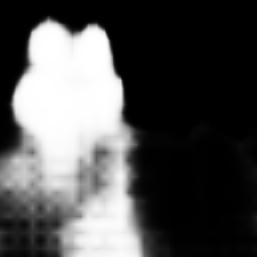The MediaPipe Image Segmenter task lets you divide images into regions based on predefined categories for applying visual effects such as background blurring. These instructions show you how to use the Image Segmenter for Node and web apps. For more information about the capabilities, models, and configuration options of this task, see the Overview.
Code example
The example code for Image Segmenter provides a complete implementation of this task in JavaScript for your reference. This code helps you test this task and get started on building your own image segmentation app. You can view, run, and edit the Image Segmenter example code using just your web browser. You can also review the code for this example on GitHub.
Setup
This section describes key steps for setting up your development environment and code projects specifically to use Image Segmenter. For general information on setting up your development environment for using MediaPipe tasks, including platform version requirements, see the Setup guide for web.
JavaScript packages
Image Segmenter code is available through the MediaPipe @mediapipe/tasks-vision
NPM package. You can
find and download these libraries from links provided in the platform
Setup guide.
You can install the required packages with the following code for local staging using the following command:
npm install --save @mediapipe/tasks-vision
If you want to import the task code via a content delivery network (CDN) service, add the following code in the
tag in your HTML file:<head>
<script src="https://cdn.jsdelivr.net/npm/@mediapipe/tasks-vision/vision_bundle.js"
crossorigin="anonymous"></script>
</head>
Model
The MediaPipe Image Segmenter task requires a trained model that is compatible with this task. For more information on available trained models for Image Segmenter, see the task overview Models section.
Select and download a model, and then store it within your project directory:
<dev-project-root>/app/shared/models/
Create the task
Use one of the Image Segmenter createFrom...() functions to
prepare the task for running inferences. Use the createFromModelPath()
function with a relative or absolute path to the trained model file.
If your model is already loaded into memory, you can use the
createFromModelBuffer() method.
The code example below demonstrates using the createFromOptions() function to
set up the task. The createFromOptions function allows you to customize the
Image Segmenter with configuration options. For more information on task
configuration, see Configuration options.
The following code demonstrates how to build and configure the task with custom options:
runningMode = "IMAGE";
async function createImageSegmenter() {
const vision = await FilesetResolver.forVisionTasks(
"https://cdn.jsdelivr.net/npm/@mediapipe/tasks-vision@latest/wasm"
);
imageSegmenter = await ImageSegmenter.createFromOptions(vision, {
baseOptions: {
modelAssetPath:
"https://storage.googleapis.com/mediapipe-assets/deeplabv3.tflite?generation=1661875711618421",
},
outputCategoryMask: true,
outputConfidenceMasks: false
runningMode: runningMode
});
}
createImageSegmenter();
For a more complete implementation of creating an Image Segmenter task, see the code example.
Configuration options
This task has the following configuration options for Web applications:
| Option Name | Description | Value Range | Default Value |
|---|---|---|---|
outputCategoryMask |
If set to True, the output includes a segmentation mask
as a uint8 image, where each pixel value indicates the winning category
value. |
{True, False} |
False |
outputConfidenceMasks |
If set to True, the output includes a segmentation mask
as a float value image, where each float value represents the confidence
score map of the category. |
{True, False} |
True |
displayNamesLocale |
Sets the language of labels to use for display names provided in the
metadata of the task's model, if available. Default is en for
English. You can add localized labels to the metadata of a custom model
using the TensorFlow Lite Metadata Writer API |
Locale code | en |
resultListener |
Sets the result listener to receive the segmentation results
asynchronously when the image segmenter is in the LIVE_STREAM mode.
Can only be used when running mode is set to LIVE_STREAM |
N/A | N/A |
Prepare data
Image Segmenter can segment objects in images in any format supported by the host browser. The task also handles data input preprocessing, including resizing, rotation and value normalization.
Calls to the Image Segmenter segment() and segmentForVideo() methods run
synchronously and block the user interface thread. If you segment objects in
video frames from a device's camera, each segmentation task blocks the main
thread. You can prevent this by implementing web workers to run
segment() and segmentForVideo() on another thread.
Run the task
The Image Segmenter uses the segment() method with image mode and the
segmentForVideo() method with video mode to trigger inferences. The
Image Segmenter returns the detected segments as image data to a callback
function you set when running an inference for the task.
The following code demonstrates how to execute processing with the task model:
Image
const image = document.getElementById("image") as HTMLImageElement; imageSegmenter.segment(image, callback);
Video
async function renderLoop(): void { const video = document.getElementById("video"); let startTimeMs = performance.now(); imageSegmenter.segmentForVideo(video, startTimeMs, callbackForVideo); requestAnimationFrame(() => { renderLoop(); }); }
For a more complete implementation of running an Image Segmenter task, see the code example.
Handle and display results
Upon running inference, the Image Segmenter task returns segment image data to a
callback function. The content of the output depends on the outputType you set
when you configured the task.
The following sections show examples of the output data from this task:
Category confidence
The following images show a visualization of the task output for a category
confidence mask. The confidence mask output contains float values between
[0, 1].


Original image and category confidence mask output. Source image from the Pascal VOC 2012 dataset.
Category value
The following images show a visualization of the task output for a category
value mask. The category mask range is [0, 255] and each pixel value
represents the winning category index of the model output. The winning category
index is has the highest score among the categories the model can recognize.


Original image and category mask output. Source image from the Pascal VOC 2012 dataset.
The Image Segmenter example code demonstrates how to display the segmentation results returned from the task, see the code example for details.
